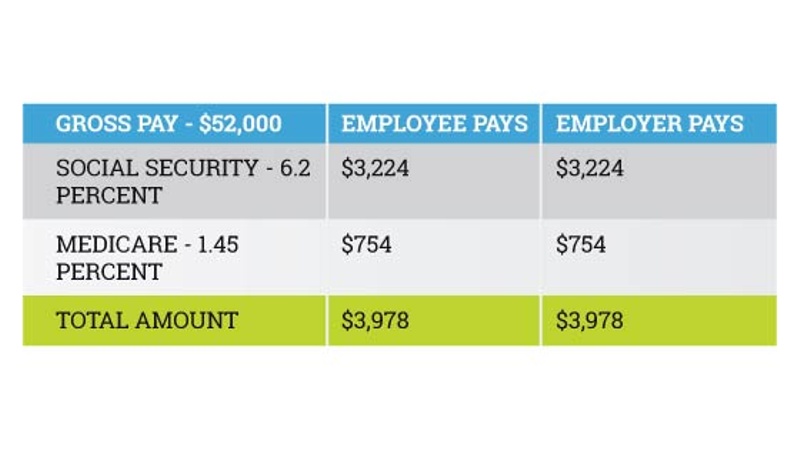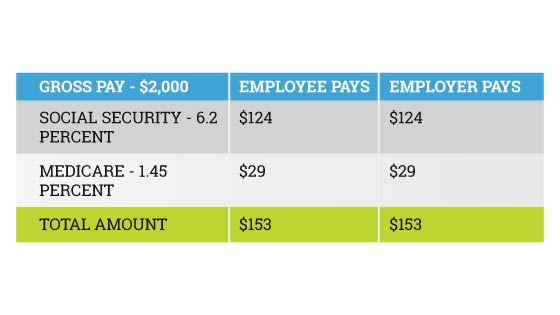In a perfect world, small business owners wouldn’t have to worry about growing compensation budgets. Unfortunately, difficult or uncertain circumstances such as economic downturns, pandemics, or other major events can put a major financial strain on your company.
These situations can call for creative solutions, and compensation costs are a natural place to start shedding expenses. Payroll expenses typically fall between 15 to 30 percent of gross revenue, with exceptions for more or less labor-intensive industries. Of course, making compensation-based changes requires a delicate balance between securing the financial stability of your business without losing valued employees.
Whether you want to stabilize business expenses or need to cut costs, it’s important to take the right measures to keep your business strong during difficult times. Let’s break down what you can do to manage compensation costs.

3 Potential Compensation Management Strategies to Cut Costs
There are a variety of approaches that you can take toward cutting or simply controlling your compensation expenditures. These strategies can be a temporary solution or permanent decision depending on your exact needs.
- Manage current and future wages and salaries
- Adjust or eliminate perks and incentives
- Lay off or furlough employees
Some routes will offer more cost savings than others, while others may create notable employee relations issues. Ultimately, you’ll need to carefully consider each of the following options and decide which makes the most sense for your business.
Manage current and future wages and salaries
According to the Bureau of Labor Statistics, wages and salaries accounted for 70 percent of employee compensation costs for private employers. The ability to cut or control these expenditures can make a major difference for businesses navigating through uncertain times. There are a few different routes your business can take in terms of managing wages and salaries:
- Hiring freezes
- Pay freezes
- Wage adjustments
Hiring freezes
A hiring freeze is one of the first steps a business can take to control compensation costs. Simply put, a hiring freeze means that your business will not add any additional personnel. Hiring freezes are temporary in nature, but can last for months depending on the situation at hand.
One major advantage of hiring freezes is that it lessens the impact of compensation control on your existing employees. Unlike other solutions, the employees don’t feel the direct impact financially. However, this also means that hiring freezes won’t actively save your company money as much as allowing you to avoid adding on additional compensation costs. If you’re looking to simply control your expenditures while you wait out uncertain times, a hiring freeze can be a smart move.
Pay freezes
Like a hiring freeze, a pay freeze allows you to control compensation costs instead of cutting them. However, pay freezes apply to existing salaries and hourly rates as opposed to adding new members to your team.
If you give out regular raises or promotions, a pay freeze would put those increases on hiatus, effectively allowing you to maintain your current expenditures for wages and salaries. Of course, this route can be unpopular with employees because it does restrict their ability to make more money in the short term. However, it can be a much more amenable approach than other cost-saving solutions.
Wage adjustment
Another route you can go is to reduce compensation cuts by adjusting hours or salaries. For hourly employees, you can have employees work fewer hours in order to keep compensation costs down. There are a few different ways this strategy can work out.
- Reduce number of days worked per week
- Reduce the number of hours worked per day
- Enact alternating work weeks
- Offer voluntary days for employees who would rather take time off than work
Each of these options can offer some financial reprieve, although it does mean that your employees will have less time to complete tasks. You’ll also want to review your local laws to make sure you follow any predictive scheduling laws. Some areas require a minimum notice period for changes in hours, days, and times worked, so make sure you give your employees proper notice if you decide to adjust work hours.
If reducing work hours isn’t enough, you can opt to enact pay reductions for salaried employees. There are a few different routes you can go with this decision.
- You can reduce pay by a same percentage for every single employee.
- You can set different percentages for different tiers of employees based on job levels, organizational hierarchy, or some other groupings (make sure you have a legitimate business justification for each group to avoid any discrimination complaints).
Pay reductions are an effective way to cut costs during difficult times, but it comes with the caveat that nobody likes making less money. As such, pay reductions are typically used only when it’s essential to cut costs. If pay reductions are a necessary step, one way to offset some displeasure is to show that everyone is impacted by the cuts, including leadership. Typically, higher-wage earners – including yourself – will take a percentage to help offset and protect lower-wage earners. While this is certainly not an enjoyable decision, it can show some solidarity between leadership roles and lower-wage workers.
Pay reductions also come with some legal considerations that may impact your ability to enact these kinds of cost-cutting measures. As with hours adjustments, your local or state laws may require you to provide advance notice on pay cuts, which may require written notice along with signed acknowledgements from each employee. Any pay reduction should not drop hourly workers below the acceptable minimum wage. The Fair Labor Standards Act (FLSA) sets the federal minimum wage at $7.25 per hour, while many states and regions have higher rates necessary for minimum payment requirements. You’ll also need to make sure that your company navigates overtime pay correctly, especially for any employees who become non-exempt due to pay reductions.
Adjust or eliminate perks and incentives
While perks and incentives may not make up as much of your compensation costs as base wages and salaries, they can still add a notable amount to your expenses. Eliminating or adjusting these extra items can make quite a difference for financial stability.
In terms of perks, evaluate what types of extra bonuses your employees may receive as a result of working for your company. Typical examples of minor perks include free lunches, tickets to events, and other monetary awards or gifts that employees can enjoy just by being part of your workforce. While these perks add to the overall experience of your business, they can quickly become non-essential in difficult times. As such, eliminating or adjusting these perks can be an initial step toward stabilizing finances that would be more popular than cutting salaries.
Another cost-saving option is to end or adjust any bonuses and incentives employees can earn. Either option isn’t likely to be met with enthusiasm, but a reduction in bonus percentages or lengthening merit cycles for performance goals can be a much more agreeable solution for employees than more drastic cost-cutting solutions. If you do decide to adjust or end any of these bonuses or incentives, it’s important to time your announcement appropriately. Waiting until shortly before these payouts will not go over well with employees, so try to make any changes well before a payout period.
Layoffs and furloughs
Depending on the situation, you may need to cut more than just costs. Layoffs and furloughs are an unfortunate reality that many businesses must face during difficult times. However, they may be a necessary step if business slows down due to unexpected circumstances.
Employee layoffs are a much more immediate form of cutting compensation costs. This measure effectively severs your ties with an employee, saving you from paying out wages, health insurance, payroll taxes, and any other costs associated with that worker. Of course, this also means that you may permanently lose this employee for good, even after your business bounces back.
If you need to make difficult compensation cuts but still want to retain certain employees, a furlough is a more attractive option. Furloughed employees are still technically employed by your company. This relationship means that you send your employees home without pay, but they are still entitled to group health coverage, retirement plans, and any other such benefits offered by your business. Furloughed employees can also apply for unemployment, so they can still have some form of incoming revenue and benefits while they aren’t working for your company – and aren’t as tempted to leave for another business.
In general, a furlough is designed to be a temporary situation. Some furloughs are designed to last for a set amount of time, while others may be indefinite until you decide it’s time to resume regular operations. Once the furlough is over, the affected employees can return to work and resume their normal duties.
How to Communicate Compensation Cuts to Employees
Running a business is already a difficult job – trying times only make it that much harder for both you and your employees. While certain compensation management strategies may not be the most pleasant news to share, it’s critical that you clearly communicate these decisions with your employees and help them understand exactly why they were made.
Changes in compensations affects employees both professionally and personally. Lost wages, incentives, and jobs has a direct impact on each person’s family and plans for the future. While these decisions are made to stabilize your business, it’s important to recognize that these actions can have long-lasting consequences for everyone involved.
This delicate balance between protecting the business and respecting your employees is why it’s crucial that you communicate these decisions directly with everyone involved. Make sure to be open, transparent, and empathetic when you deliver the news to everyone. Employees should be able to not only recognize the severity of the situation, but also that you understand how difficult this news is for everyone.
It’s also important to maintain communication after you announce your initial plans. Frequent, clear updates is one of the best ways to support your employees during trying times. Let them know that you and other people in leadership positions are ready to listen to their concerns and ideas. By sharing regular updates and open communication, you can provide a necessary sense of security and stability while everyone works through these difficult times.
Prepare Your Business for the Future
Some events are impossible to predict, but there are always measures you can take to help protect your employees from difficult times. Fortunately, you don’t have to go through this process alone.
Group Management Services partners with small business owners to take on the administrative burden of HR management and make their businesses simpler, safer, and stronger. Contact GMS today to talk to one of our experts about how we can help you manage payroll, benefits, and other key HR functions.












